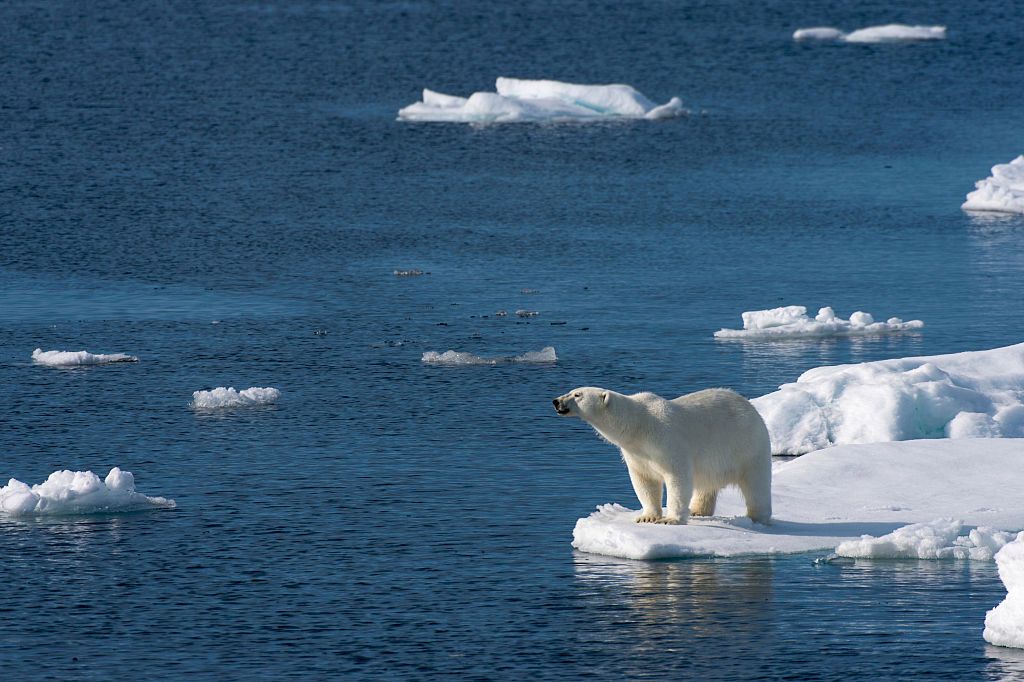Rapid and “devastating” Arctic warming is now almost unstoppable, United Nations researchers warn in a major new report.
Unless humanity makes very rapid and deep pollution cuts, Arctic winter temperatures will rise 5.4 to 9.0°F (3-5°C) by 2050 — and will reach an astounding 9 to 16°F (5-8.8°C) by 2080 — according to a report by the U.N. Environment Program released Wednesday.
Even worse, the report, “Global Linkages: A graphic look at the changing Arctic,” warns that warming will in turn awaken a “sleeping giant” in the form of vast quantities of permafrost carbon. This carbon has been frozen in the permafrost for up to thousands of years, but as the atmosphere warms, the permafrost will thaw. This will release the trapped carbon, and trigger more planet-wide warming in a dangerous feedback loop.
As the report explains, warming in the Arctic is occurring at least twice as fast as warming across the planet as a whole, thanks to Arctic amplification. One reason for this amplification is that when highly reflective snow and ice melts due to higher temperatures, it is replaced by the dark blue sea or darker land, both of which absorb more solar energy than they reflect, leading to more melting.

“Arctic amplification is most pronounced in winter and strongest in areas with large losses of sea ice during the summer,” researchers explain, so winter warming in the region is projected to rise three times faster than the world as a whole.
But as this feedback loop plays out, it also triggers another one: the thawing of the Arctic permafrost and the release of the carbon that it contains.
Thawing permafrost is an especially dangerous amplifying feedback loop because the global permafrost contains twice as much carbon as the atmosphere does today . The permafrost, or tundra, is soil that stays below freezing (32°F or 0°C) for at least two years. It acts like a freezer for carbon, but now humanity has decided to leave the freezer door open.
The thawing releases not only carbon dioxide but also methane — a far more potent greenhouse gas — thereby further warming the planet. And as the planet continues to warm, more permafrost will melt, releasing even more greenhouse gases in a continuous feedback loop.
“New evidence suggests that permafrost is thawing much faster than previously thought,” the report warns. Indeed, a recent study found that Siberian permafrost at depths of up to 30 feet warmed a remarkable 1.6°F (0.9°C) from 2007 to 2016.
The U.N. report quotes the saying: “What happens in the Arctic does not stay in the Arctic.”
For instance, the Arctic’s rapid warming is weakening the jet-stream, which leads weather patterns to stall, and that drives more extreme weather in this country, such as heavy precipitation on the East Coast and extreme drought on the West Coast.
And the quicker the Arctic heats up, the quicker the land-based Greenland ice sheet melts and the quicker sea levels rise. One 2017 study concluded that Greenland ice mass loss has tripled in just two decades.
But the authors of the U.N. report explain that simply meeting the initial emissions reduction targets in the 2015 Paris Climate Accord will not be enough to stop “devastating” warming and the loss of nearly half the permafrost this century. Those initial targets would not limit total warming to 2°C (3.6°F), which is why the Accord calls for ratcheting down those targets over time in order to keep warming “well below 2°C.”
So, to avoid accelerated warming, massive permafrost loss, ever-worsening extreme weather, and multi-feet sea level rise, the nations of the world must not only make deep cuts in CO2 emissions over the next decade, but also they must then keep ratcheting down global emissions to near zero around mid-century.
Yet, President Donald Trump is taking the country in the dangerously wrong direction by starting the process of withdrawing from the Paris agreement and rolling back domestic climate efforts.
What humanity needs to avert catastrophe are the kind of rapid emissions reductions envisioned in the Green New Deal, which aims for a carbon-free power sector by 2030 and the decarbonization of all other sectors as fast as technically possible.


